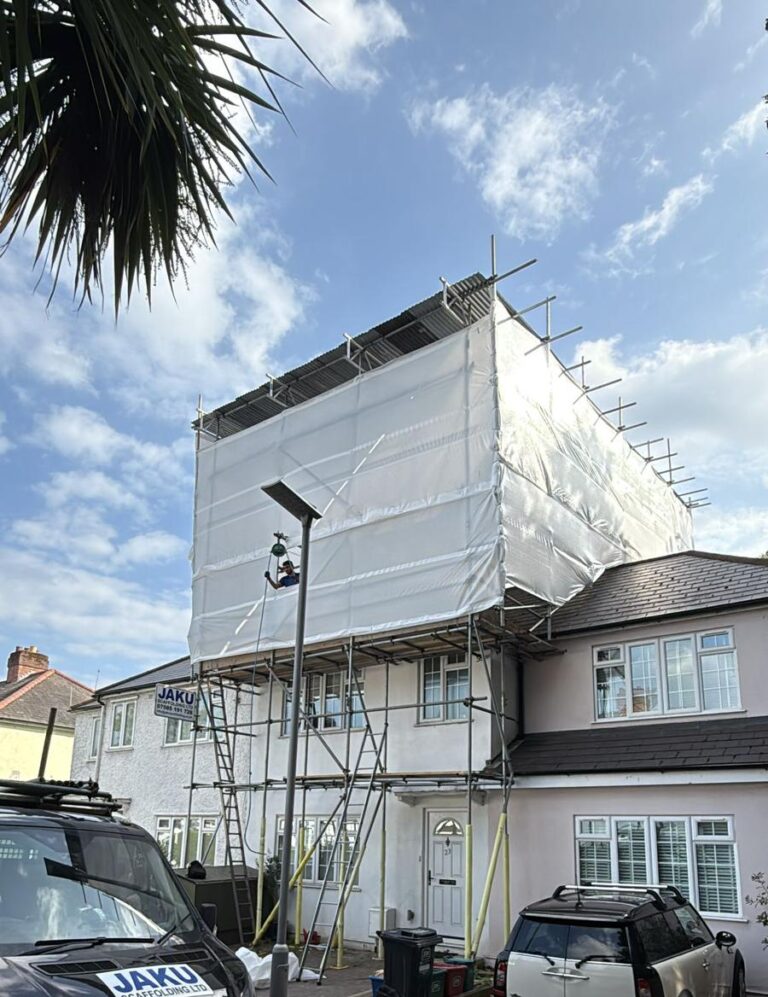Guidance on Scaffolding for Houses and Small Projects
When planning any home improvement or repair project that involves working at height, safety must always come first. Whether you’re repainting your home’s exterior, installing solar panels, fixing a leaking roof, or carrying out a loft or rear extension, scaffolding provides safe and stable access for tradespeople to complete their work efficiently.
This guidance explains when scaffolding is required for residential projects, the most common types used, and the main safety and legal considerations homeowners should be aware of.
Common Scaffolding Options for Residential Projects
There is no single type of scaffolding that suits every property. The structure will depend on the type of work, the height of the building, and available access. Below are the most common types of residential scaffolding systems:
1. Scaffolding Towers
Used for small-scale work such as exterior painting or gutter repairs. They can be quickly assembled, moved easily, and offer a safe working platform for one or two tradespeople.
2. Scaffolding for Brickwork
Ideal for building or extending single- or two-storey homes. These scaffolds allow safe access for bricklayers and builders to complete walls, chimneys, or extensions.
3. Standard Scaffolding (1.5m wide)
The most common setup for residential properties. Typically built with two or four boards, depending on working space needs, and can be erected at the front, rear, or around the full perimeter of the property.
All scaffolds we design comply with TG20:21 standards and include guardrails, toe boards, and secure access points.

When Do You Need Scaffolding at Home?
Scaffolding is essential whenever work cannot be done safely from a ladder or other temporary platform. You may need scaffolding for:
- Exterior painting and decorating
- Rendering or insulation installation
- Roof, gutter, and fascia board repairs
- Loft conversions and house extensions
- Solar panel fitting or maintenance
Even for small projects, using proper scaffolding can reduce risk, improve access, and make it easier to achieve a professional finish.
Health and Safety Guidance
In the UK, all scaffolding work must follow the Work at Height Regulations 2005. These rules are in place to protect anyone involved in working above ground level.
Key points include:
- All scaffolding work must be properly planned, supervised, and carried out safely.
- Platforms higher than 2 metres require guardrails and toe boards.
- Scaffolds must only be erected, modified, or dismantled by competent and CISRS-qualified personnel.
- Inspections must be carried out before use and after any alteration or severe weather.
For hired scaffolding, the scaffolding company is responsible for safety and compliance. However, for DIY scaffold towers, users must ensure they are trained and follow all manufacturer safety guidance.
Licences and Council Permissions
If scaffolding is placed on private property, no licence is required.
However, if any part of it sits on a public pavement or roadway, a highway licence from the local council is mandatory.
As a professional scaffolding company, we handle the entire application process on behalf of clients, including:
- Submitting detailed drawings and RAMS (Risk Assessment and Method Statement)
- Coordinating with local councils
- Providing evidence of £10 million public liability insurance
This ensures every project meets both safety and legal requirements without delay.
Frequently Asked Questions
1. Do I always need scaffolding for home maintenance?
Not always. For minor jobs under 2 metres high, a secure ladder might suffice. However, for multi-level or prolonged work, scaffolding is essential for safety and compliance.
2. How long does scaffolding take to set up?
Most residential scaffolds can be erected within a few hours to one working day, depending on the property’s size and access.
3. Can I put scaffolding up myself?
Only qualified scaffolders should erect or dismantle scaffolding. DIY towers can be used for very small tasks, but users must follow all safety precautions.
4. Do I need to contact the council myself?
No. If the scaffold extends onto public property, we arrange the scaffolding licence on your behalf.
5. Is domestic scaffolding covered by insurance?
Yes. Reputable companies like ours are fully insured, offering £10 million public liability cover for all residential scaffolding work.
Final Guidance
Scaffolding is more than just a temporary structure — it’s a vital safety system that ensures every home project is completed efficiently and without risk. Whether you’re extending your property, fixing the roof, or simply giving your house a fresh coat of paint, make sure your scaffolding is designed and installed by qualified professionals.
For advice or a free quotation, contact our team today — we’ll recommend the safest and most cost-effective scaffolding setup for your project.



